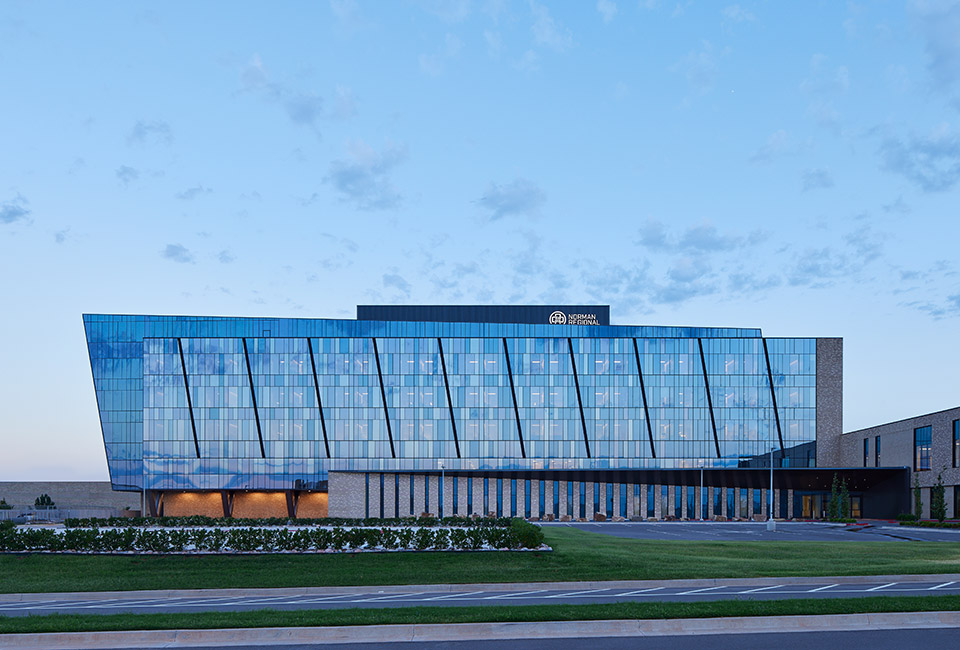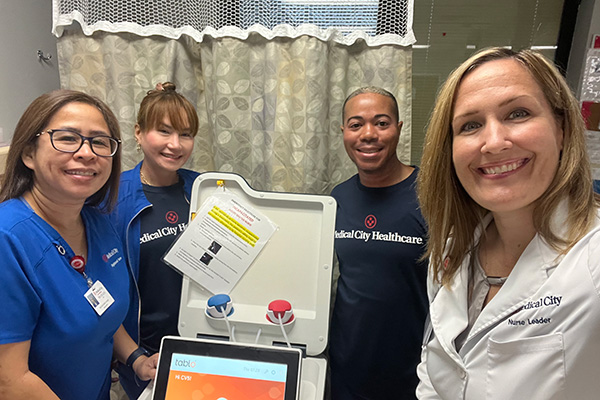Building Dialysis Care from the Ground Up: How Norman Regional Launched an In-House Program with Tablo

Summary
For years, Norman Regional Health System relied on outsourced dialysis services — until it became clear that delays, limited visibility, and patient transfers were compromising care. Faced with mounting challenges, the team did something bold: they set out to build an in-house dialysis program.
In a recent webinar, Brittni McGill, MSN, RN, NEA-BC, Chief Operating and Chief Nursing Officer at Norman Regional, shared how her team replaced an unreliable model with a fully integrated dialysis program powered by the Tablo® Hemodialysis System and ICU-trained nurses. The result: a 279% increase in volume, improved care coordination and a fully retained nursing team driving quality at every step.
Growing a Team from Within
For Norman Regional, bringing dialysis in house wasn’t just about gaining control, it was about investing in the team behind the care. “Instead of going after dialysis-trained nurses, we took the opportunity to grow our own,” said McGill. Today, ICU-trained nurses make up 90% of the dialysis team, and the results speak for themselves: “At the one-year mark, we’ve had a 100% retention rate,” said McGill.
The shift to an internal team not only created continuity, but also built stronger bonds of trust between physicians and patients. “Before, it was kind of a rotating door with our contracted service. The nephrologists never really knew who was on the other end of the phone,” explained McGill. Once the team was fully trained on Tablo, patients could feel confident knowing they had an established and reliable care team leading their treatment.
Tablo at the Center of the Decision
Choosing the right technology was critical to the success of Norman Regional’s in-house dialysis program. “Doing something like this takes guts,” said McGill. “You’ve got to have a lot of faith, and you’ve got to have good partners.”
The decision to move forward with Tablo quickly paid off. “We really became confident in our decision with the Tablo device,” McGill explained. “It was very easy to use. It was very portable. We have a dialysis unit, but we can also take the device to the bedside. There was no need for a water room. And what really sold us was the analytics piece.”
That data visibility, in particular, turned out to be a game changer. “We had no line of sight to data to drive any sort of quality initiatives,” said McGill. Now, she explained, “our two teams get together and review our analytics on a routine basis. That’s what we’ve done to drive process and performance improvement since the beginning.”
A Smooth Transition For the Staff
Transitioning from a continuous renal replacement therapy (CRRT) model to a prolonged intermittent renal replacement therapy (PIRRT) model required a shift in approach, but not in staffing.
The dialysis process continued to be led by one ICU nurse per patient, just as it had been under CRRT. This consistency in workflow made the transition to Tablo significantly easier for the nursing staff.
The change was also welcomed by nephrologists, who had been frustrated with the limitations of the contracted service. “They were the ones calling me about all of the issues from that contracted service. They were pretty much to the point where, ‘We will do whatever you tell us. We will do anything different, but I can’t get what I need for my patients.’”
Targeted and Timely In-House Dialysis Care
One of the most striking improvements for Norman Regional following the transition to an in-house dialysis program with Tablo was the dramatic rise in treatment completion rates. “Before, if a patient didn’t tolerate a treatment, we brought them back to their room,” said McGill. With Tablo, the approach became more personalized and proactive. Now, McGill explained, “we’re making sure that the specific patient is getting the specific treatment they need at the right time. And that’s powerful.”
Reducing CLABSIs and Elevating Standards
As Norman Regional gained greater control over its dialysis program, improvements in clinical outcomes followed, such as a reduction in central line-associated bloodstream infections (CLABSIs). McGill attributes the drop in CLABSIs to consistency and accountability. “There are six people that are cleaning, accessing, and maintaining these lines and these dressings. There was no way for us to have oversight in the clinical quality of the previous vendor.”
Although CLABSI reduction wasn’t included in the original financial projections, its impact has been clear: “The CLABSI penalties are not even built into our ROI. Our ROI is built on volume alone, so that’s additional cost savings.”
Unlocking New Gains in Patient Flow
The insourced model had unexpected positive ripple effects across emergency department operations. “We didn’t anticipate the patient flow gains,” McGill said. “When patients present to the ED and they don’t need to be admitted — they just need a treatment — we’re able to pull them out of the ED, provide that treatment in the dialysis unit, and then discharge them from there.”
That flexibility also extended to discharges. “When we have discharge orders pending a treatment, we’re able to pull that patient into the unit, provide their treatment, and discharge them home from there. Meanwhile, that bed is being cleaned and turned over for another patient.”
The improvements were stark: “Our order-to-treatment time is down two and a half hours.”
Delivering More with the Same Resources
Since the switch to an in-house program, dialysis volume at Norman Regional has surged. “We’ve had a 279% volume increase,” said McGill. “And we have not added a single FTE [full time equivalent].”
McGill attributes the growth to a reliable care model that earns trust. “I think the physicians are ordering appropriate things. I think the patients are happy, and they’re coming back to the organization. I also know that we’ve almost eliminated any transfers to other facilities because of a dialysis reason.”
Efficiency has helped their team keep pace. “Because of our efficiency, we were able to fill up the dialysis unit. And because we had strict parameters in place for after-hours, urgent, and emergent cases, we’ve been able to absorb this.”
What Comes Next?
Looking ahead, Norman Regional plans to seek external accreditation and is actively exploring outpatient expansion. “We feel very comfortable with the machines now,” McGill said. “And it’s the same physician group outpatient is in, so there is some synergy there.”
For health systems considering a similar move, McGill had one final piece of advice: “If you have the opportunity to build this team collectively together, do it. There is so much cultural power in doing that.”
Interested in learning more about how Norman Regional made the switch?
Watch the full webinar here to see how the team took control of dialysis and never looked back.
Quotes have been lightly edited for clarity. The views and opinions expressed herein represent the personal opinions of the facility staff, and do not represent the views or opinions of other persons, institutions or organizations.

